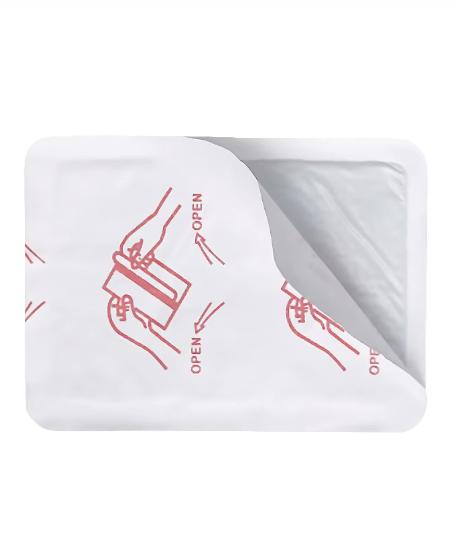הבנה של סוגי כאבים ופתרונות פתרונות מתאימים
כאב נוירופתי: מכוון לאזור אי-נוחות העצבים
כאב נוירופתי נובע מקטעי עצבים פגועים, לרוב תוצאה של סיבות כמו סוכרת או הזאדה. אנשים שסובלים מסוג זה של כאב תוארים אותו לעיתים קרובות כתחושת שריפה, חריכה, או כאילו מחטטים במקומות מסוימים שוב ושוב. טיפול בכאב נוירופתי יכול להיות מאתגר במיוחד מכיוון ששיטות מסורתיות אינן תמיד מצליחות להעניק הקלה מספקת. אופציות לטיפול בכאב כולל שימוש בשרשיות לכאב, שהופנו לפופולריות ביחס לטיפול בסימפטומים אלה, שכן הן ממיסות תרופה בדיוק במקום שבו העצבים מופעלים. השרשיות מכילות חומרים כמו לידוֹקיין, אשר הוכיחו יעילות רבה במחקרים שונים שעוקבים אחרי מטופלים עם בעיות של כאב עצבים. היתרונות המובילים הן שהתרופה מגיעה ישר לנקודה שדורשת את ההקלה, כך שהמטופל מקבל הקלה בדיוק במקום שבו היא נחוצה, מבלי צורך לבלוע כדורים שעלולים להשפיע על אזורים אחרים בגוף.
כאבי מוסקלו-סkeletal: התמודדות עם בעיות שרירים ועצמות
כשאנשים מדברים על כאבי שרירים ושלד, הם מתייחסים לאי נוחות בשרירים, בעצמות ובמפרקים שבדרך כלל נובעת מדברים כמו שימוש יתר, פציעות או בעיות כמו דלקת פרקים. מדבקות להקלה על כאבים הפכו לחשובות למדי לניהול כאב מסוג זה מכיוון שהן עוזרות להפחית דלקות ומספקות אפקט מרדים מסוים. המרכזים לבקרת מחלות ומניעתן מציינים למעשה כי הפרעות מסוג זה מדורגות בראש רשימת בעיות בריאות נפוצות, ומשפיעות על מיליונים ברחבי הארץ ועולות למערכות הבריאות הון תועפות מדי שנה. מה שהופך מדבקות לעבודה כל כך טובה הוא האופן שבו הן מעבירות את החומרים האנטי-דלקתיים כמו מתיל סליצילט ומנטול ישירות למקום הכואב. שיטת מתן ישירה זו מעניקה להן יתרון מכיוון שתרופות מסורתיות עלולות לגרום לתופעות לוואי לא רצויות בכל הגוף. עבור אנשים המתמודדים עם כאב כרוני, אפשרות טיפול מקומית זו מתגלה לעתים קרובות כיותר ניתנת לניהול בהשוואה לגישות אחרות.
ניהול arthritis: גישות מוקדשות על inflammation
קיימות רבות צורות שונות של דלקת פרקים, כמו דלקת פרקים שגרונית ודלקת פרקים אוסטאו, ובנוסף לכך, דלקת היא גורם מרכזי בכאב הפרקים. אופציות לשיכוך כאבים מכילות חומרים הפועלים ישירות על הالتهاب. דברים כמו קפסאיצין מפלפל צ'ילי וסאליצילט מתיל (שדומה לאספירין) הם מה שמאפשר לאופציות האלה לפעול. מרבית האנשים מגלים שהחומרים האלה עוזרים בהפחתת הכאב ובשיפור תפקוד המפרקים. רופאים בדרך כלל תומכים בשימוש באופציות האלה מכיוון שהן נוטות להיות אפקטיביות נגד כאב דלקתי. חלק מהמחקרים אף מצביעים על כך שאנשים שלא מוצאים שיכוך בדרכים אחרות, מגלים ש patches מספקות הפצה, במיוחד כשמטרת הטיפול היא שליטה בדלקת. חולי דלקת פרקים עשויים לשקול את השימוש באופציות האלה שכן הן מספקות שיכוך ממוקד, מבלי לחשוף את הגוף לאי נוחויות הנלוות לקליטה של כדורים או תרופות נוזליות לאורך היום.
מרכיבים פעילים בדבקות תבליטי כאב
Lidocaine: תכשירי הרדמה למגיעה מקומית
לידוקאין מופיע בחלונות רבות למניעת כאבים שזמיינן זמינות בחנויות היום. התרופה פועלת על ידי הפרעה בقنלי נתרן מיוחדים בתאי העצב שמעבירים אותות כאב. קנלים אלו נוטים להתעורר במקרי כאב נוירופתי. כאשר הם חסומים, הם מפסיקים לשלוח את האותות הכאובים במערכת העצבים, מה שמסביר למה אנשים מרגישים פחות אי נוחות באזור שטופל. חוקרים בחנו למעשה עד כמה לידוקאין עובד ב scenarious שונים של ניהול כאב. מחקר מסוים שראוי לציון גילה שחומרים זמינים ללא מרשם של חלונות לידוקאין סיפקו עזרה אמיתית לאנשים הסובלים מהתפרצויות ארטрит וכאב גב תחתון כרוני. מה שמעניין? הם עבדו כמעט כמו הגרסאות החזקות יותר המסופקות על פי מרשם, לפי ממצאי המחקר של קסטרו ודנט.
קפסייצין: פתרונות מבוססי חום למצבים כרוניים
קפסאיצין מגיע מפלפלים חריפים ופועם בכך שהוא מפחית את רגישות קולטני העצבים, מה שמפחית תחושות כאב. אנשים רבים מוצאים בו עזר בבעיות ממושכות כמו ארטритיס או כאבי עצבים. בעת הפעלה, הקפסאיצין מתאגד לקולטנים מסוימים בעצבים. בהתחלה זה יוצר תחושת שריפה, אך לאחר מכן מתחילה תחושת חניקה. מחקר מצביע על כך שהדבקות המכילות קפסאיצין יכולות להעניק הקלה למשתמשים במאמץ עם כאבים מתמשכים. סקירת המחקרים מצביעה על הוכחות לכך שקפסאיצין מצליח יותר מטיפולים פלצבו גם בכאב עצבים וגם בכאב שרירים/שלד. עם זאת, לא כל אחד חווה תוצאות מרשימות. בכל זאת, רבים פונים למוצרי קפסאיצין כשמבקשים פתרון שונה מתרופות מרשם רגילות.
מנתול לעומת סליצילט מetyl: תוצאות קרירה לעומת חימום
מנתול וסאליצילט מתיל פועלים בצורה שונה כשמדובר בשיכוך כאבים, מה שהופך אותם למתאימים לסיטואציות שונות. המנתול יוצר את התחושה הקרירה שאנשים אוהבים, ולכן הוא מצוין לשיכוך מהיר של שרירים כואבים לאחר אימון או פגיעות פתע. מאידך стороны, סאליצילט מתיל מחמם את האזור, ובעזרתו מוגזמת הזרימה באזור מפרקים קשיחים ושרירים מתוחים. כשמחליטים איזה אחד מהם להשתמש, אנשים לרוב מתחשבים בסוג הכאב שהם חווים, ובאופן שבו הגוף שלהם מגיב. רבים מדווחים שהמנתול פועל במהירות על כאבים חדים, בעוד אחרים מאמינים בחום האיטי של סאליצילט מתיל לסיבוכים ממושכים כמו ארטритיס או פגיעות חוזרות בגלל שזה מרגיש כאילו הוא חודר עמוק יותר לרקמות לאורך הזמן.
חלופות עשבוניות: השוואה בין רכיבים טבעיים
הכל יותר ויותר אנשים פונים לפ patches לפינוי כאבים שמכילים צמחים כמו אرنיקה ולביב כאשר הם מעדיפים אותם על תרופות קונבנציונליות. אנשים רבים מוצאים את המרכיבים הצמחיים מושכים כיוון שהם נראים בטוחים יותר ופועלים בצורה עדינה על הגוף. מחקר על ת_patches_ים אלו מציג תוצאות מעורפלות. ישנם מחקרים שמראים שהם יכולים להיות יעילים באותה מידה כמו ת_patches_ים רגילים בנסיבות מסוימות. ניקח לדוגמה את האرنיקה – לפי מחקרים מסוימים היא אכן עוזרת בהפחתת כאבים שרירים לאחר אימונים. רבים מהצרכנים בוחרים באפשרויות אלו פשוט כי הם מודאגים מהערכות הלוואי שעלולות לנבוע מהשימוש בתרופות סינתטיות. עובדה זו מסבירה את העלייה הגדולה בדרישה לאמצעי הפסקת כאבים טבעיים בשוק כרגע. אלו המחפשים אלטרנטיבות לתרופות פארמקולוגיות כעת עומדים בפני אופציות אמיתיות לניהול כאבים בעזרת מתנות הטבע.
בחירת לפי מיקום ועוצמת הכאב
כאב מפרקים: אופטימיזציה של גודל השכבה והדבקות
בחירת הגודל הנכון חשובה מאוד כשמתמודדים עם כאבי מפרקים באמצעות מדבקות. כאשר מדבקה מתאימה כראוי, היא עובדת טוב יותר מכיוון שרכיבי התרופה מגיעים לאן שהם צריכים להגיע. גדולה מדי והיא פשוט מרגישה לא נוחה על העור, קטנה מדי וחלקים מהאזור הכואב נותרים בחוץ מה שהופך את הכל לפחות יעיל. דביקות גם נחשבת למשהו רציני. אם מדבקה נשארת במקומה במהלך פעילויות רגילות כמו הליכה או הושטת יד מעל הראש, אז היא עושה את מה שהיא צריכה. מפרקים נוטים לזוז כל הזמן אחרי הכל. המדבקות הטובות ביותר למפרקים בדרך כלל מוצאות את הנקודה המתוקה בין כיסוי לעוצמת אחיזה. קחו את Salonpas כדוגמה שאנשים רבים מזכירים באינטרנט. אנשים מדברים על איך המדבקות האלה נשארות במקומן מבלי להחליק, ועדיין מכסות מספיק שטח פנים כדי לעשות את ההבדל בכאבי הברך או הכתף שלהם לאורך כל היום.
לאสบาย גב תחתון: אפשרויות לבישת ממושכת
כאב גב בחלק התחתון נובע לרוב ממושב ממושך מדי או מ Gewohnheit של פוסטורה לא נכונה, וזה באמת מפריע לחיים היומיומיים. אפליקציות שפותחו במיוחד לחלק זה של הגוף מציעים לאנשים דרך קלה להשיג הקלה ממוקדת בדיוק באותו המקום שבו היא נחוצה ביותר. האפליקציות הארוכות יותר מנצחות את הקצרות בתוקף שלהן בכמה דרכים. האפשרויות להרכבה ממושכת ממשיכות לעבוד כל היום מבלי שיהיה צורך להחליף אותן כל הזמן, מה שמחסוך כסף ומציקות. נמצאו מחקרים שמראים שאנשים המשתמשים באפליקציות ארוכות הפעולה הללו מרגישים טוב יותר לאורך תקופות ארוכות בהרבה, משהו שחשוב במיוחד כשמדובר בבעיות גב מתמשכות. קחו לדוגמה את אפליקט ה-Icy Hot Lidocaine. רבים מגלים שהמותג הספציפי הזה פועל בצורה עקבית כל היום בגלל שהוא נשאר במקומו ומנזר את התרופה ביעילות לאורך זמן.
כאב אקוטי לעומת כיבים כרוניים: יישומים לטווח קצר לעומת לטווח ארוך
התמודדות עם כאב באה בשתי טעימות עיקריות, חריפות וכרוניות, והם דורשים גישות שונות לחלוטין. כאב חריף מופיע פתאום אחרי שמשהו קורה, כמו פציעה או ניתוח, ונעלם די מהר. לכן אנשים מנסים להשיג פלטרים שפועלים מהר כשהם מתמודדים עם כאב כזה. למפרקים האלה יש בדרך כלל מרכיבים חזקים שעובדים כמעט מיידית כדי להוריד את אי הנוחות. כאב כרוני מספר סיפור אחר. סוג זה נשאר בסביבה במשך שבועות, חודשים לפעמים אפילו שנים. לנהל את זה צריך משהו שונה משהו שנמשך יותר זמן מבלי לצורך תשומת לב מתמדת. לאנשים תקועים עם בעיות כאב מתמשכות, יש פלטסים שנועדו במיוחד למטרה זו. אנשי מקצוע רפואיים ממליצים על סלונפס לרוב למקרים של תיקון מהיר, כיוון שהוא עובד מהר מאוד. כשזה מגיע לטיפול בכאב כרוני יום אחרי יום, רבים פונים ללידודרם במקום. זה משחרר תרופות לאט לאורך היום, נותן הקלה מתמדת ללא כל הקשיים של יישומים תכופים.
סניפיות העור והיסטוריה רפואית
אפשרויות היפואלגניות לעור רגיש
אנשים עם עור רגיש צריכים להתייחס בזהירות בבחירת א_patches_ לפתרון כאבים, מכיוון שאפשרויות היפואלרגניות אכן מפחיתות השפעות של התражות ותגובת אלרגיה. الاخبار הטובים הם שה parches_ הללו מיוצרים מחומרים עדינים יותר שלא פוגעים בעור רגיש. כיום קיימות מגוון גדול של אפשרויות היפואלרגניות, רבות מהן מיוצרות במיוחד לאנשים dealing עם בעיות עור. מרבית дерמטולוגים יפנו חולים patches_ ללא רכיבים מרגיזים, וכוללים חומרים שעברו מבחני ביטחון. כל מי שפגיע לרגישות עור יעשה חכמה להתייעץ עם дерמטולוג. ייעוץ מקצועי עוזר למצוא את ה patch_ המתאים לצרכים הספציפיים של העור במקום לנחש מה יעבוד הכי טוב.
הימנעות ממגע עם מצבים קיימים
אנשים עם בעיות בריאות קיימות בהחלט צריכים לדבר עם הרופא שלהם לפני ניסיון עם הא_patches_ להקלת כאבים. ישנן רכיבים נפוצים שנמצאים ב_patches_ הללו כמו מנтол, לידו קוין וסאליצילט מתילי שיכול להיות שאינם מתאימים למצבים רפואיים מסוימים. אנחנו מדברים על דברים כמו בעיות לב או אלרגיות לתרופות כאן. היו מקרים אמיתיים שבהם אנשים סיבכו את הבעיות שלהם עוד יותר עקב שימוש ב_patches_ כשלא היה להם סיבה. אחד אנשים phátח ית ulcers ב da ש da, אחר מצא את הכאב kroni שלו הופך לקשה יותר. קבלת ייעוץ רפואי תקין היא ההבדל. רופאים יכולים לעזור לבחור את סוג ה_patch_ הנכון בהתאמה לסוג הכאב וההיסטוריה הרפואית של כל אדם.
בטיחות MRI וסיכונים של גביש מתכני
ש_PATCHES_ ל relief from pain עם גב מתכתי מציבים סיכונים אמיתיים כאשר מישהו צריך סריקת MRI. המתכת מגיבה בצורה רעה עם מכונת ה-MRI, מה שיכול לגרום לשריפות חמורות או אף לפגיעה ברקמות הפנימיות של הגוף. הבטחה קודמת אומרת להיפטר מכל ה_PATCHES_ האלה זמן רב לפני שנכנסים לחדר הסקנר. הרופאים מדגישים נושא זה מאוד, ולכן המטופלים תמיד צריכים לבדוק פעמיים איזה סוג חומר מכיל ה_PATCH_ לפני שמחלקים אותו על פני העור. מרפאות רבות מפרסמות עכשיו רשימות ליד אזור ה-MRI שמראות אילו מוצרים בטוחים ללבישה. מטופלים שמבזבזים רגע כדי לאמת את המידע הזה חוסכים את עצמם מקנסים מיותרים בהמשך, במיוחד כיוון שבעיות דומות יכולות לקרות גם עם סוגי צילום רפואיים אחרים.

שיפור היעילות: יישום ותזמון
טכניקות מיקום נכונות לסיוע ממוקד
הประโยה מהמריחות לכאב תלויה מאוד במקום שבו הם ממוקמות על הגוף. כדי להשיג את האפקט הטוב ביותר, על האנשים להציב אותן בדיוק על או קרוב אל המקום הכואב. המגע הישיר עם העור הוא מה שקובע עד כמה התרופה נספגת אל תוך הנקודה הכואבת. רוב האנשים מוצאים את עצמם מדביקים את המריחות הקטנות והדביקות על האזור התחתון של הגב לאחר יום ארוך בעבודה, או אולי על הכתפיים הכואבות מהתיישבות ממושכת מול המחשב. הברכיים הן אזור נפוץ נוסף לטיפול במקרי כאב בפרקים. למעשה, חברות רבות מצרפות דיאגרמות שמראות בדיוק היכן להדביק אותן, מה שעוזר למתחילים להבין את הנושא מבלי לנחש. חלק מהחברות אפילו מסמנות את האריזון בציורים פשוטים כדי שלא יהיה בלבול לגבי המיקום.
משך זמן חשוב: אדסונים של 8 שעות לעומת 12 שעות
בעודכם בוחרים בין משכי זמן של הידבקות, אנשים לרוב מגלים שהבחירה הזו יוצרת הבדל אמיתי ביחס לכמות הריחוי מהכאב שאתם מקבלים וכמו גם להשפעה על העור. רוב הא_patches לrellief כאבים זמינים למשך 8 או 12 שעות על העור. בחירה באפשרות הארוכה יותר פירושה פחות טרחה, מאחר שאין צורך להדביק patch אחר זמן קצר לאחר הסרת הpatch הראשון. אך חכו! לעיתים קרובות התאחה יכולה להתרחש אם מישהו משאיר patch לזמן ארוך מדי. רבים אכן מעדיפים את הpatches של 12 השעות מאחר שהם פשוט ממשיכים לעבוד כל היום ללא הפסקה. אחרים נצמדים לגרסה הקצרה יותר כאשר העור שלהם נעשה רגיש. מציאת האיזון הנכון בין משך הזמן שהpatch נצמד ובין רגישות העור עוזרת לאנשים רבים להבין מה עובד הכי טוב עבורם אישית.
מתי להחיל שוב: זיהוי של השפעות מופחתות
חשוב להבין מתי הא_patches להקלת כאבים כבר לא פועלים כראוי, במיוחד אם רוצים להפיק את המקסימום מהם. רוב האנשים נוטים לשים לב לכך כאשר הכאב הישן שלהם חוזר או שהם פשוט כבר לא מרגישים את אותה הקלטה. כשזה הזמן להשים חדש, ההיגיון אומר לעקוב אחרי ההוראות שכתובות על האריזה. כדאי לתת לעור לשהות בין יישור לאخر ולנסות מקומות שונים על הגוף כדי למנוע התגרעות. קריאה מדוקדקת של התוויות עוזרת להימנע משימוש מוגזם בא_PATCHES בו-זמנית, מה שיכול לפגוע בעור. וגם לשוחח עם רופאים או בוטנים על תדירות החלפת הא_PATCHES? כנראה זה חכם יותר מאשר לנחש, במיוחד כיוון שכל מצב הוא קצת שונה.
שאלות נפוצות
איזה סוגים של כאבים ניתן לנהל באמצעות תבליטים נגד כאבים?
תבליטים נגד כאבים יכולים לנהל כאבים נוירופתיים, כאבי שרירים ועצמות, ארTHRITIS, וכמו כן מצבים של כאבים חudos וkroni.
האם אביזרי הקלה לכאבים בטוחים עבור עור רגיש?
כן, קיימים אופציות hypoallergenic עבור אנשים בעור רגיש, המפחיתים את הסיכון לפציעה ואלרגיות.
האם אני יכול להשתמש בתבליטים נגד כאבים אם יש לי מצב רפואי?
חשוב להתייעץ עם רופא לפני השימוש במפרקים משככי כאב אם יש לך מצבים רפואיים קיימים כדי למנוע אינטראקציות או סיבוכים פוטנציאליים.
האם יש חלופות טבעיות למפרקים הרגילים?
כן, מרכיבים צמחיים כמו ארניקה ולבנדר משמשים בחלק מהגלימות כחלופות טבעיות להקל על כאב.
אילו אמצעי זהירות עלי לנקוט לפני MRI אם אני משתמשת בציפוי משכך כאבים?
הסר את כל התפרים לפני הניתוח ל- MRI כדי למנוע סיכונים הקשורים לחומרים מתכות המתגבשים עם המכונה.

